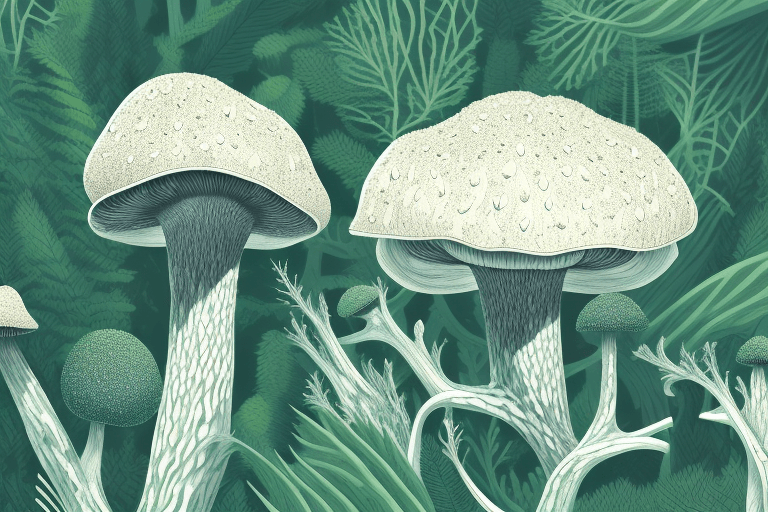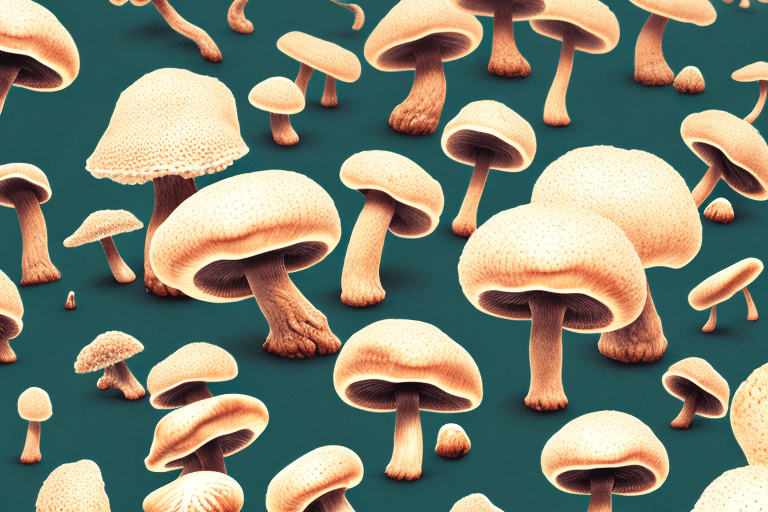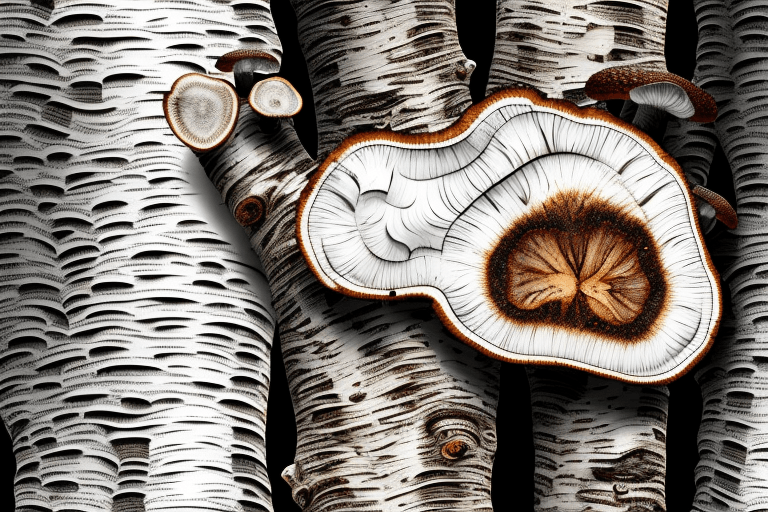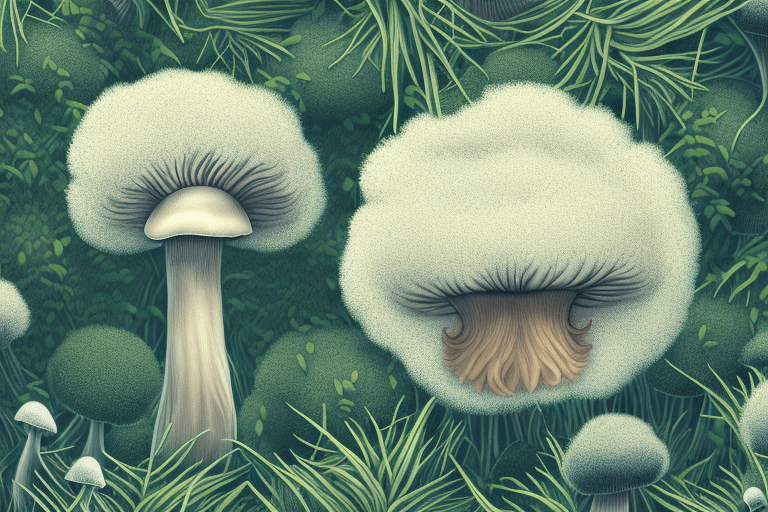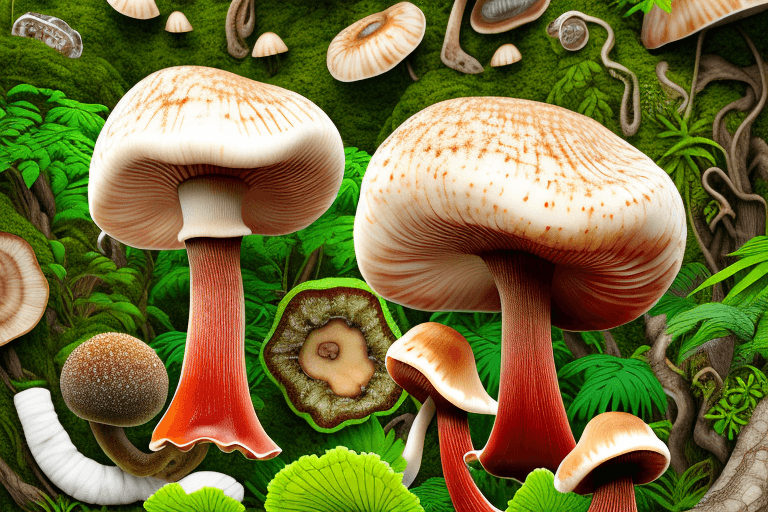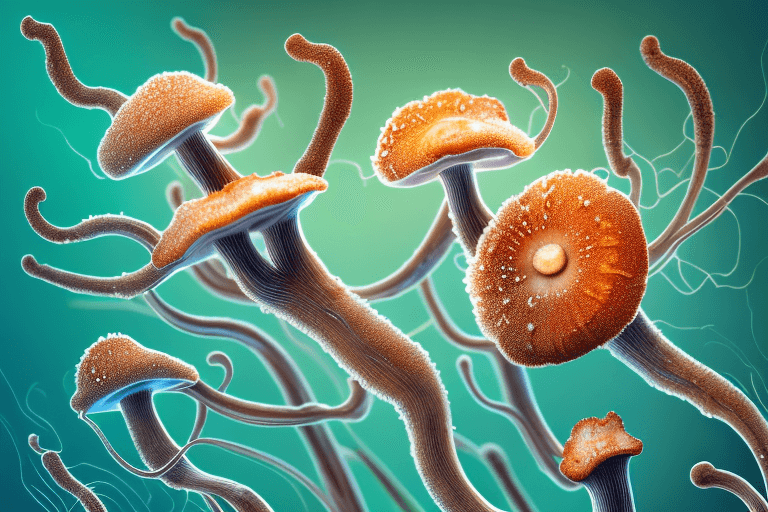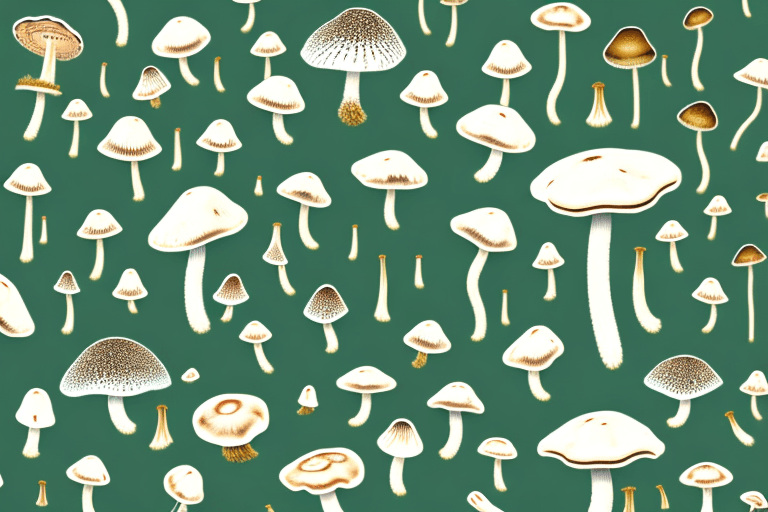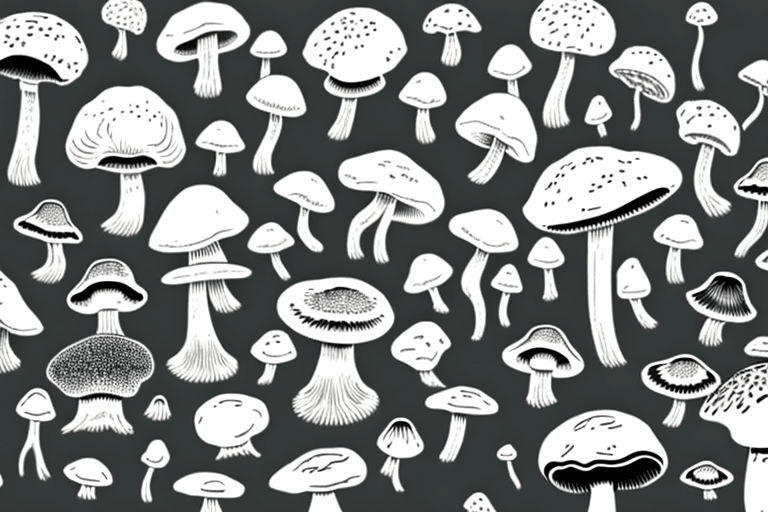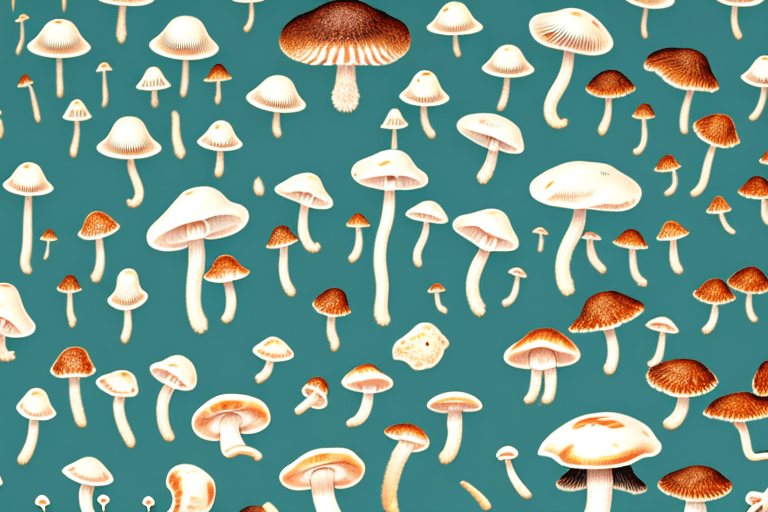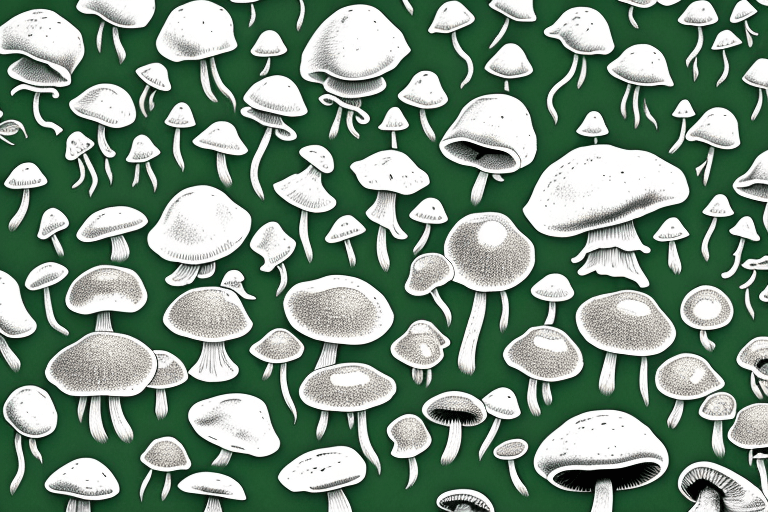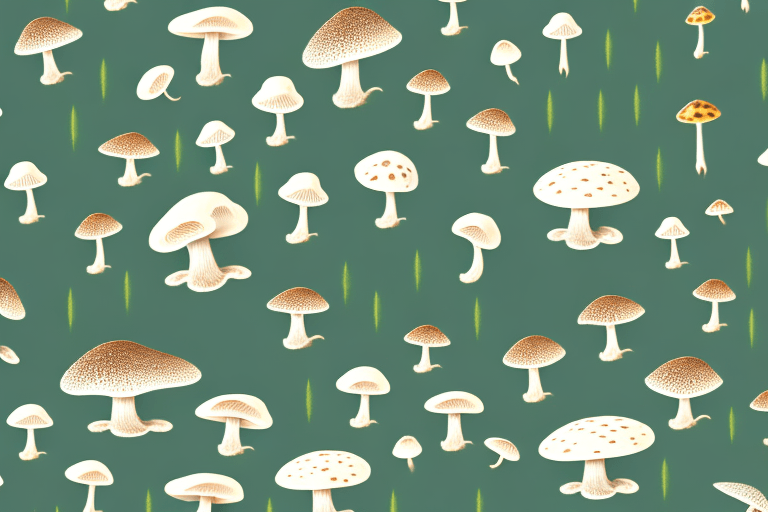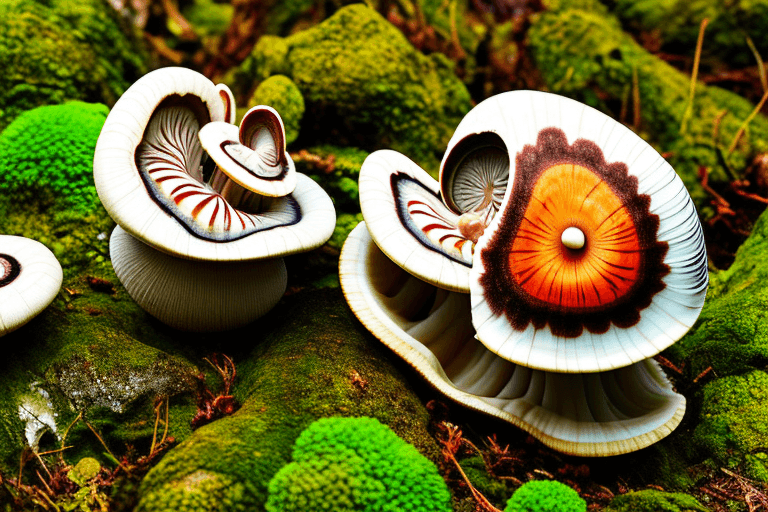
Turkey Tail: Functional Mushrooms Explained
Functional mushrooms have been a cornerstone of traditional medicine for centuries, and among them, the Turkey Tail mushroom holds a special place. Known for its unique fan-like appearance and vibrant colors, this mushroom is more than just a pretty face in the fungi kingdom. It's packed with a plethora of health benefits that have been recognized and utilized by various cultures around the world.Scientifically known as Trametes versicolor, the Turkey Tail mushroom is a common polypore mushroom found throughout the world. Its name is derived from its colorful growth rings that resemble the tail of a wild turkey. This mushroom is not only a beautiful sight in the wild, but it's also a powerful functional mushroom that has been used in traditional medicine for its immune-boosting properties.Historical Use of Turkey TailThe use of Turkey Tail dates back to the early civilizations of China and Japan, where it was highly valued for its medicinal properties. It was commonly used in traditional Chinese medicine (TCM) and Japanese Kampo medicine for its immune-boosting and anticancer properties. The mushroom was often brewed into a tea or soup and consumed for its health benefits.In the West, the use of Turkey Tail has been relatively recent, but it has quickly gained recognition for its potential health benefits. Today, it is one of the most widely researched and used functional mushrooms, with numerous scientific studies supporting its medicinal properties.Use in Traditional Chinese MedicineIn traditional Chinese medicine, Turkey Tail is known as Yun Zhi. It has been used for centuries to strengthen the immune system, enhance stamina, and promote longevity. It was often prescribed for patients with chronic illnesses to boost their immunity and improve their overall health.Moreover, Turkey Tail was also used to treat various diseases, including respiratory infections, liver diseases, and even certain types of cancer. Its use in TCM is a testament to its powerful medicinal properties and its potential role in promoting health and wellness.Use in Japanese Kampo MedicineIn Japanese Kampo medicine, Turkey Tail is known as Kawaratake. It has been used for centuries to boost immunity, improve digestion, and treat various ailments. The mushroom was often consumed in the form of tea or soup for its health benefits.Today, a derivative of Turkey Tail, known as PSK (Polysaccharide K), is one of the best-selling cancer drugs in Japan. PSK is derived from the mycelium of the Turkey Tail mushroom and has been proven to have potent anticancer properties.Health Benefits of Turkey TailModern scientific research has validated many of the traditional uses of Turkey Tail, revealing a wealth of health benefits. These benefits are primarily attributed to its rich content of polysaccharides, including beta-glucans, which are known for their immune-boosting properties.Furthermore, Turkey Tail also contains a variety of antioxidants, including phenols and flavonoids, which help protect the body against oxidative stress and inflammation. These compounds contribute to the mushroom's potential health benefits, which include immune support, cancer prevention, and gut health improvement.Immune SupportOne of the most well-known benefits of Turkey Tail is its ability to support the immune system. This is primarily due to its rich content of beta-glucans, a type of polysaccharide known for its immune-modulating properties. Beta-glucans can enhance the body's immune response, helping to protect against various diseases and infections.Studies have shown that consuming Turkey Tail can increase the activity of natural killer cells and macrophages, key components of the immune system. This can help boost the body's defense against pathogens and potentially prevent the onset of various diseases.Cancer PreventionAnother significant benefit of Turkey Tail is its potential role in cancer prevention and treatment. This is primarily due to its content of polysaccharide-K (PSK), a protein-bound polysaccharide that has been shown to have potent anticancer properties.PSK has been shown to inhibit the growth of cancer cells and enhance the body's immune response against cancer. It is currently used as an adjuvant therapy in cancer treatment in Japan, and ongoing research suggests it may have potential as a natural cancer treatment in the future.Gut Health ImprovementLastly, Turkey Tail can also contribute to gut health improvement. It contains prebiotics, which can help nourish the beneficial bacteria in the gut. This can help improve digestion, enhance nutrient absorption, and support overall gut health.Moreover, studies have shown that Turkey Tail can help restore the balance of the gut microbiota, which can be disrupted by factors such as poor diet, stress, and antibiotic use. This can potentially help prevent and treat various gut-related issues, including digestive disorders and inflammatory bowel disease.How to Use Turkey TailThere are various ways to incorporate Turkey Tail into your diet. It can be consumed in the form of tea, tincture, or supplement. The choice depends on personal preference and the desired health benefits.Regardless of the form, it's important to ensure that the Turkey Tail product is sourced from a reputable supplier to ensure its quality and potency. It's also recommended to consult with a healthcare professional before starting any new supplement regimen, especially for individuals with underlying health conditions or those taking medication.TeaOne of the most traditional ways to consume Turkey Tail is by brewing it into a tea. This can be done by steeping dried Turkey Tail mushrooms in hot water for several minutes. The resulting tea has a mild, earthy flavor and can be consumed daily for its health benefits.It's important to note that the polysaccharides in Turkey Tail are water-soluble, meaning they can be extracted into the water during the brewing process. Therefore, consuming Turkey Tail tea can provide a good dose of these beneficial compounds.TinctureAnother way to consume Turkey Tail is in the form of a tincture. This is a concentrated liquid extract that can be taken orally. Tinctures are often preferred for their convenience and potency, as they can provide a concentrated dose of the beneficial compounds in Turkey Tail.To use a Turkey Tail tincture, simply add the recommended number of drops to a glass of water or juice and consume. It's important to follow the manufacturer's instructions for the correct dosage.SupplementLastly, Turkey Tail can also be consumed in the form of a supplement. This is often in the form of capsules or tablets that contain a concentrated dose of Turkey Tail extract. Supplements can provide a convenient and potent way to incorporate Turkey Tail into your diet.When choosing a Turkey Tail supplement, it's important to look for products that are made from pure Turkey Tail extract and do not contain any fillers or additives. It's also recommended to choose products that are standardized to contain a certain percentage of polysaccharides, as these are the key beneficial compounds in Turkey Tail.ConclusionOverall, Turkey Tail is a powerful functional mushroom that offers a wealth of health benefits. From its historical use in traditional medicine to its modern-day recognition as a potent immune booster and potential cancer fighter, this mushroom truly stands out in the world of functional mushrooms.Whether consumed as a tea, tincture, or supplement, Turkey Tail can be a valuable addition to any wellness regimen. Its potential health benefits, coupled with its rich history and ongoing scientific validation, make it a functional mushroom worth exploring.
